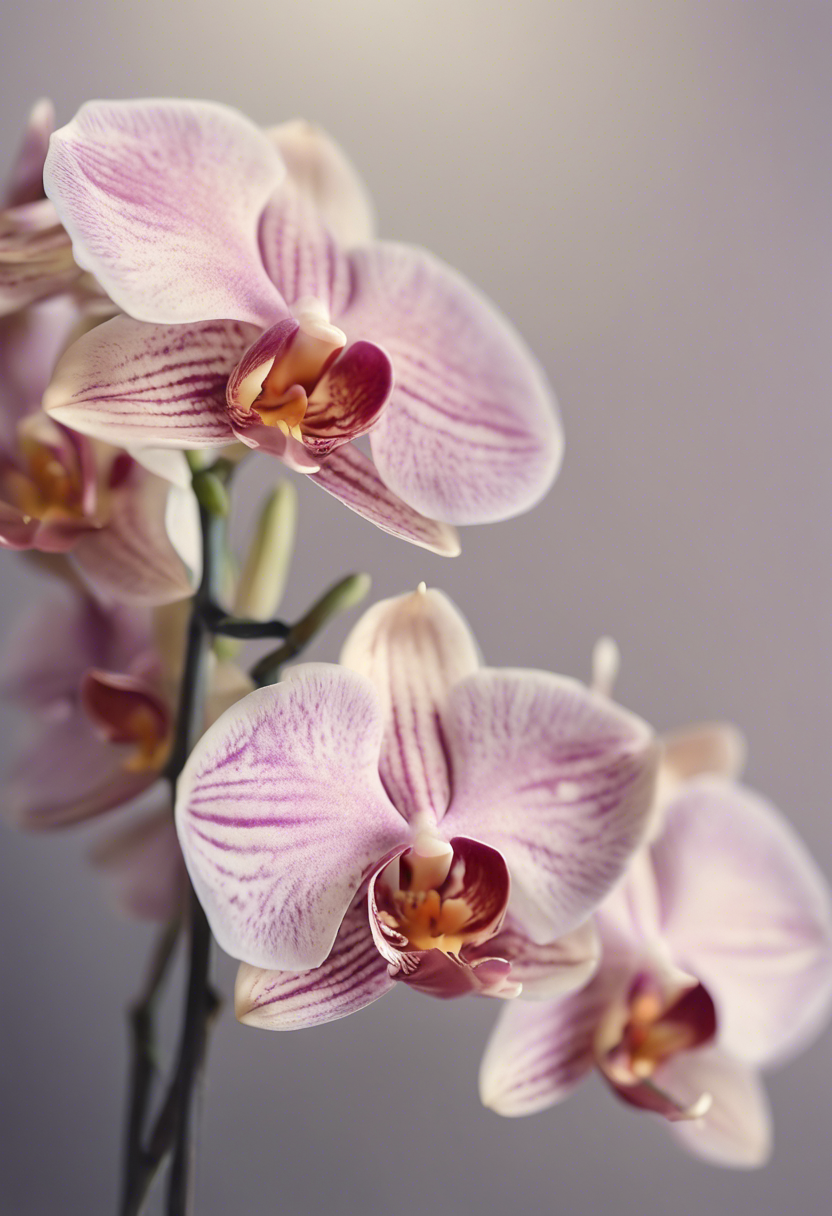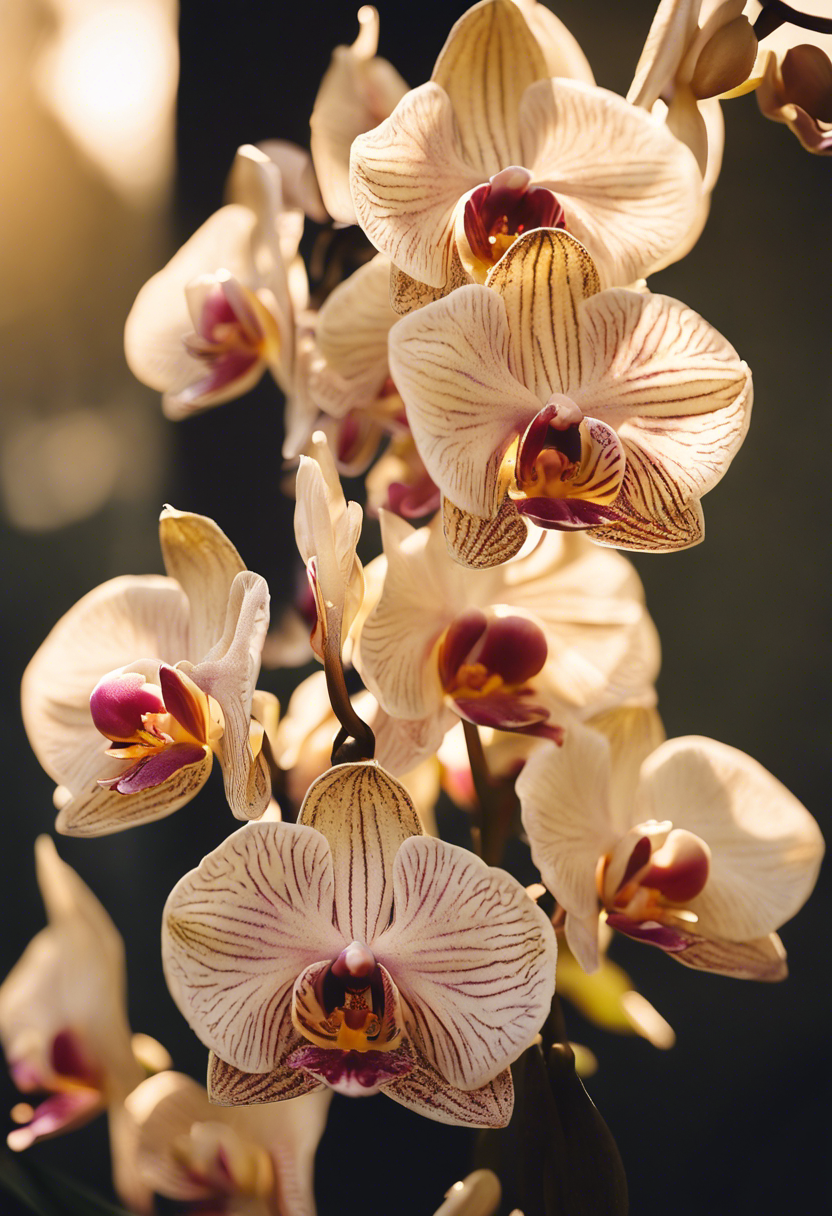
Orchid Flower is some of the most beautiful and fascinating flowers in the world. With their vibrant colors and unique shapes, they have captivated the hearts of flower enthusiasts for centuries. In this blog post, we will explore some interesting facts about the orchid flower.

1. Orchid Diversity
The orchid family, scientifically known as Orchidaceae, is one of the largest families of flowering plants. It consists of over 25,000 different species, making it one of the most diverse plant families on Earth. Orchids come in a wide range of shapes, sizes, and colors, with each species having its own distinct characteristics.
Orchid Habitats
Orchids can be found in almost every corner of the world, except for Antarctica. They are known to thrive in a variety of habitats, including rainforests, deserts, mountains, and even on trees. Some orchids are epiphytic, meaning they grow on other plants, while others are terrestrial and grow in the ground. This adaptability is one of the reasons why orchids have been able to survive and flourish in diverse environments.
Orchid Symbolism
Throughout history, orchids have held different meanings and symbolisms in various cultures. In ancient Greece, orchids were associated with fertility and virility, while in China, they symbolized refinement and luxury. In Victorian England, orchids were seen as a symbol of love and beauty. Today, orchids are often given as gifts to convey sentiments of love, admiration, and appreciation.
Orchid Reproduction
Unlike many other flowers, orchids have unique methods of reproduction. While most flowers rely on bees or other insects for pollination, some orchids have evolved to attract specific pollinators, such as bees, butterflies, or even birds. In some cases, orchids have developed intricate shapes, colors, and scents to lure their pollinators. The relationship between orchids and their pollinators is a fascinating example of coevolution.
Orchid Flower Longevity
Orchids are known for their longevity. With proper care, some orchid species can live for several decades. The Phalaenopsis orchid, also known as the moth orchid, is one of the most popular orchids among enthusiasts and can bloom for up to three months. With its elegant flowers and long-lasting blooms, the Phalaenopsis orchid has become a favorite choice for indoor gardening.
Orchid Cultivation
Cultivating orchids can be a rewarding but challenging endeavor. Orchids require specific care and conditions to thrive. Proper watering, temperature, humidity, and light levels are crucial for their growth. There are various methods of orchid cultivation, including potting, mounting, and hydroponics. Each method has its own set of advantages and considerations, making orchid cultivation a fascinating and ever-evolving field.
Orchid Flower Care and Maintenance
Orchid Diseases and Pests
Caring for orchids can be a rewarding experience. Despite their exotic appearance, many orchids are not difficult to grow. Basic orchid care involves providing the right amount of light, water, and humidity. Orchids also need a well-draining growing medium and regular feeding with a balanced orchid fertilizer. With proper care, an orchid can reward its grower with stunning blooms year after year.
Like any other plant, orchids can be susceptible to diseases and pests. Common orchid diseases include root rot, leaf spot, and fungal infections. Pests that can harm orchids include mealybugs, scale insects, and spider mites. Regular inspection and prompt treatment can help keep your orchids healthy and pest-free.
Orchid Conservation
With their beauty and diversity, orchids are a treasure of our planet’s biodiversity. However, many orchid species are threatened by habitat loss, climate change, and over-collection. Orchid conservation efforts are crucial to protect these magnificent plants from extinction. These efforts include habitat protection, cultivation and reintroduction programs, and public education about orchid conservation.
Orchid Hybridization
Orchid hybridization is a popular practice among orchid growers. By cross-breeding different orchid species or varieties, growers can create new hybrids with desirable traits such as vibrant colors, unique shapes, and longer-lasting blooms. Orchid hybridization has resulted in a vast array of stunning and diverse orchid hybrids.
Orchid Flower in Culture and Art
Orchids have been featured in various forms of culture and art. From paintings and literature to music and film, the beauty and mystery of orchids have inspired countless artists around the world. Orchids are also popular subjects in photography, where their intricate shapes and vibrant colors can be captured in stunning detail.
In conclusion, orchids are truly fascinating plants. With their immense diversity, unique adaptations, and captivating beauty, they continue to enchant and inspire people around the world. Whether you are a seasoned orchid grower or a novice enthusiast, there is always something new to learn and discover about these remarkable flowers.
FAQs
- How often should I water my orchid? The frequency of watering can depend on several factors, such as the type of orchid, the growing medium, and the environment. Generally, it’s best to water your orchid when the growing medium has dried out.
- Why are the leaves on my orchid flower turning yellow? Yellow leaves can be a sign of overwatering, under watering, or a nutrient deficiency. If your orchid’s leaves are turning yellow, it’s important to diagnose the problem and adjust your care routine accordingly.
- Can I grow orchids outside? Yes, many types of orchids can be grown outside, as long as the conditions are suitable. Some orchids prefer cooler temperatures, while others need a warm and humid environment.
- How long do orchid blooms last? The length of an orchid’s bloom can vary depending on the species. Some orchids can bloom for several weeks, while others can bloom for several months.
- What should I do if my orchid has pests? If your orchid has pests, it’s important to identify the type of pest and treat it accordingly. Common treatments include insecticidal soaps, horticultural oils, and in some cases, systemic insecticides.
